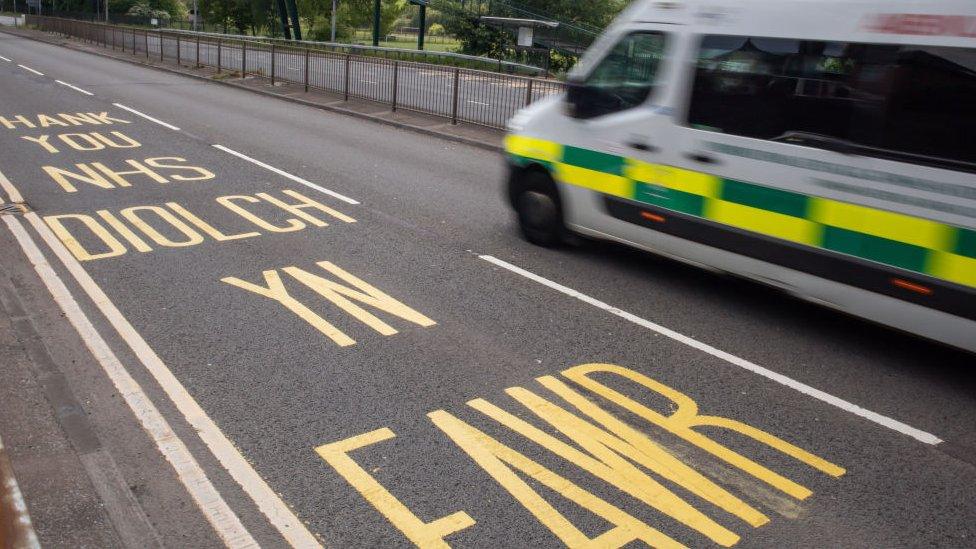Coronavirus: How did one county in Wales escape the worst of it?
- Published
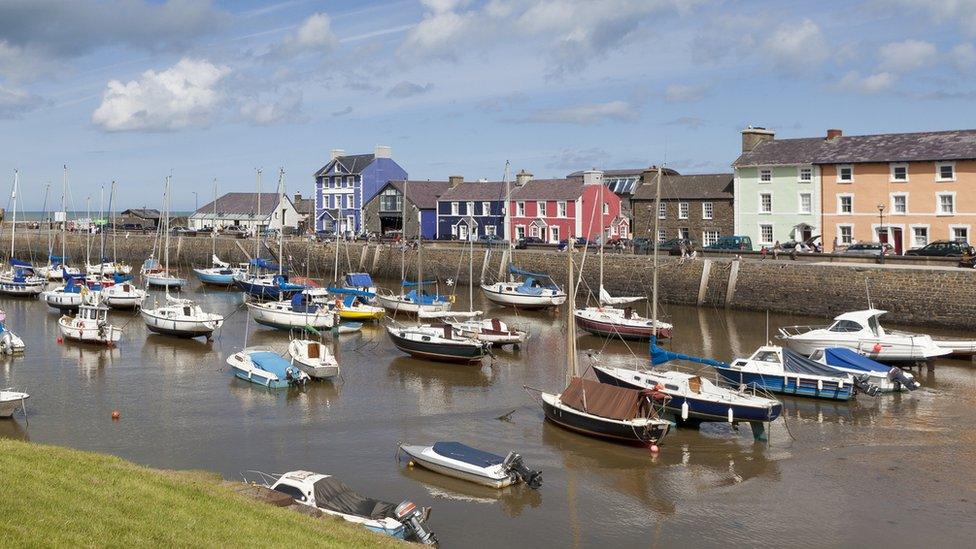
There have been only seven deaths from coronavirus in Ceredigion so far
Much has been made in recent weeks of the apparent success of one Welsh county in dealing with coronavirus.
Across England and Wales, only the Isles of Scilly have recorded a lower death rate than Ceredigion.
The local council - which set up its own contact tracing operation - has been widely praised for its response to the virus.
But the region's low infection rates are down to a "combination" of factors, according to public health officials.
BBC Wales has carried out a detailed analysis of available data, focusing on Ceredigion's position in relation to known risk factors for the spread of Covid-19.
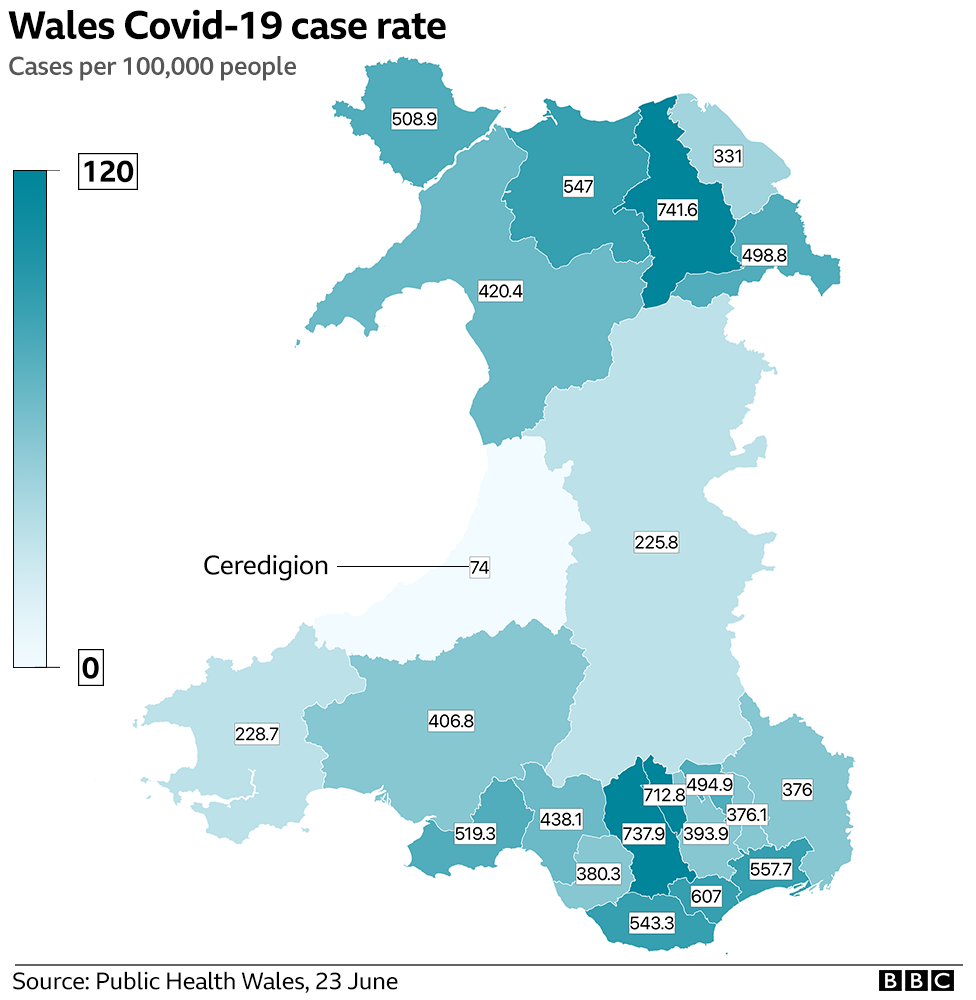
What are the latest figures?
Look at a map of Wales broken down by local authority and Ceredigion really does stand out in terms of confirmed cases.
It is still in double figures, whereas every other county has dealt with hundreds.
This cannot be explained by lack of testing, according to Public Health Wales' incident director Dr Giri Shankar.
Taking population into account, testing rates have "not been significantly lower than for other local authorities", he said.
And - importantly - the percentage of samples coming back with a positive result is "very low", about 3%.
The situation's just as striking when you consider deaths from the disease - the rate in Ceredigion far lower, not just compared with urban parts of south east Wales but neighbouring, predominantly rural counties too.
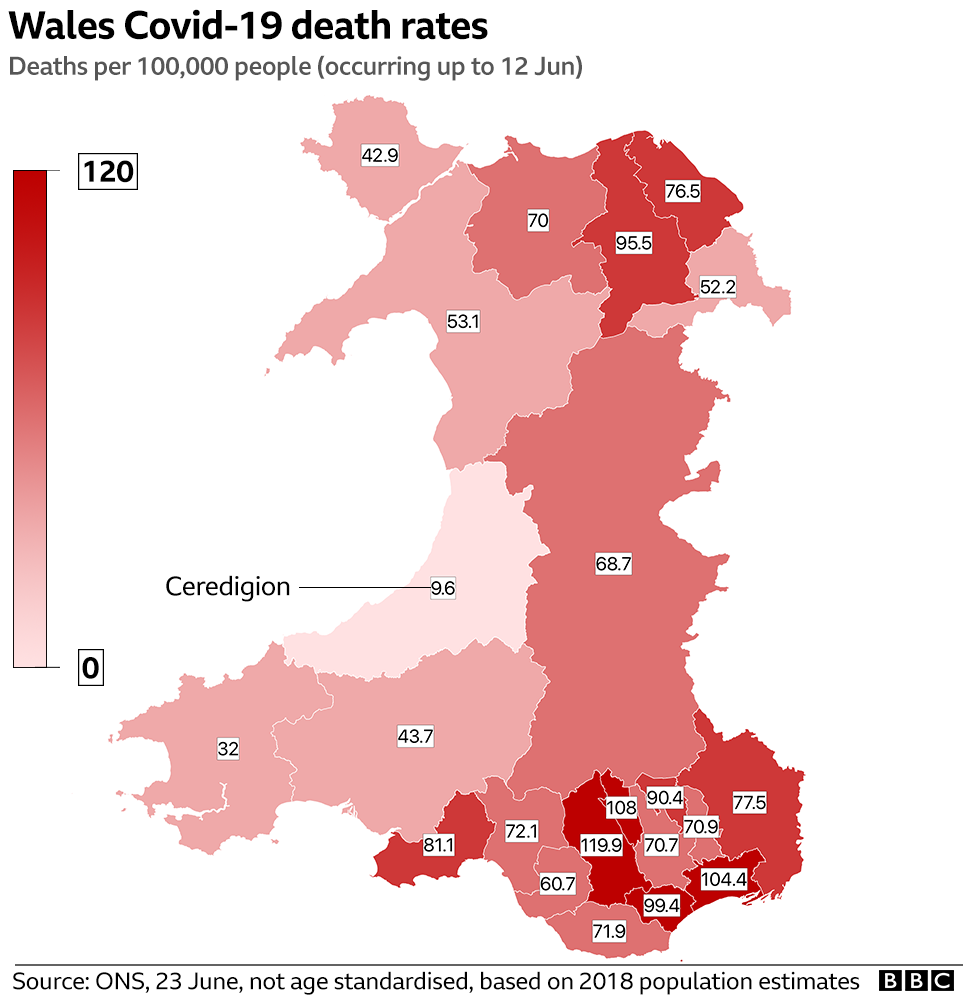
Is it to do with geography?
Being a coastal county in the heart of Wales - far from the initial focus of the outbreak in the country's south east corner - has certainly been an advantage, experts say.
"The pandemic progressed predominantly east to west," Dr Shankar said, and by the time it reached Ceredigion, lockdown measures had been introduced.
"It also doesn't have large urban areas where there's the potential for more mixing between individuals."
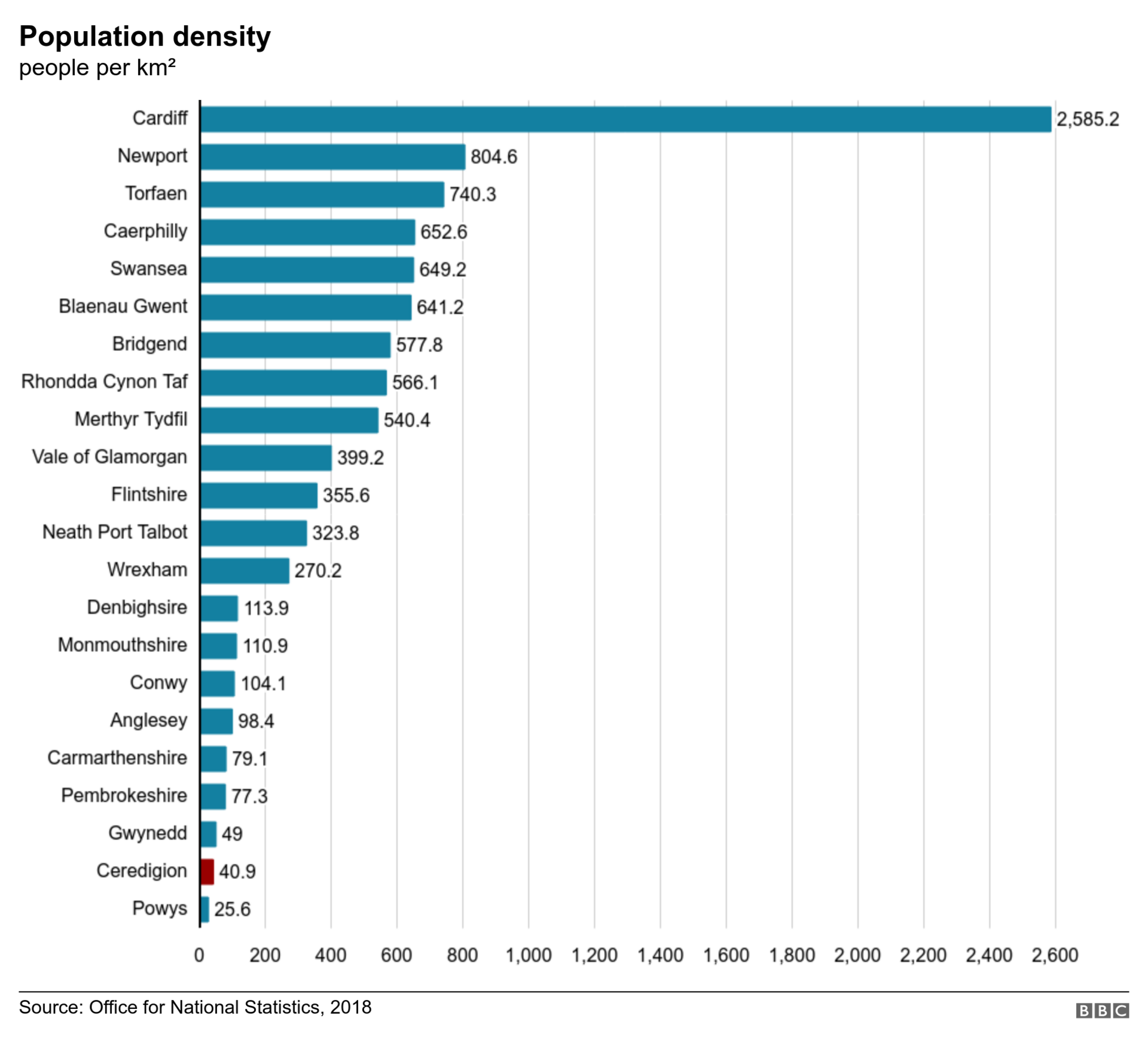
More densely populated parts of the country have generally experienced higher rates of the disease.
Only Powys has fewer people per square kilometre than Ceredigion - though it has more cases and deaths.
"Ceredigion has at least in part been protected by its geography," agreed Prof Michael Woods of Aberystwyth University.
"We know the coronavirus spreads primarily through close contact between people and the lower population density in rural areas makes it more difficult.
"The relative remoteness also means fewer people here were travelling back and forth to places with high numbers of cases like south Wales, the West Midlands and Merseyside."
Prof Woods has been researching the virus's spread throughout Europe, concluding that the UK stands out compared with other countries when you consider the extent to which the disease has been able to severely impact virtually all areas - Ceredigion being "one of the few exceptions".
"One of the key things we've found is that geographical containment makes a difference - countries with lower numbers of coronavirus overall have tended to contain the disease in one or two cities or regions, suggesting that in the UK we were perhaps too slow to go into lockdown."
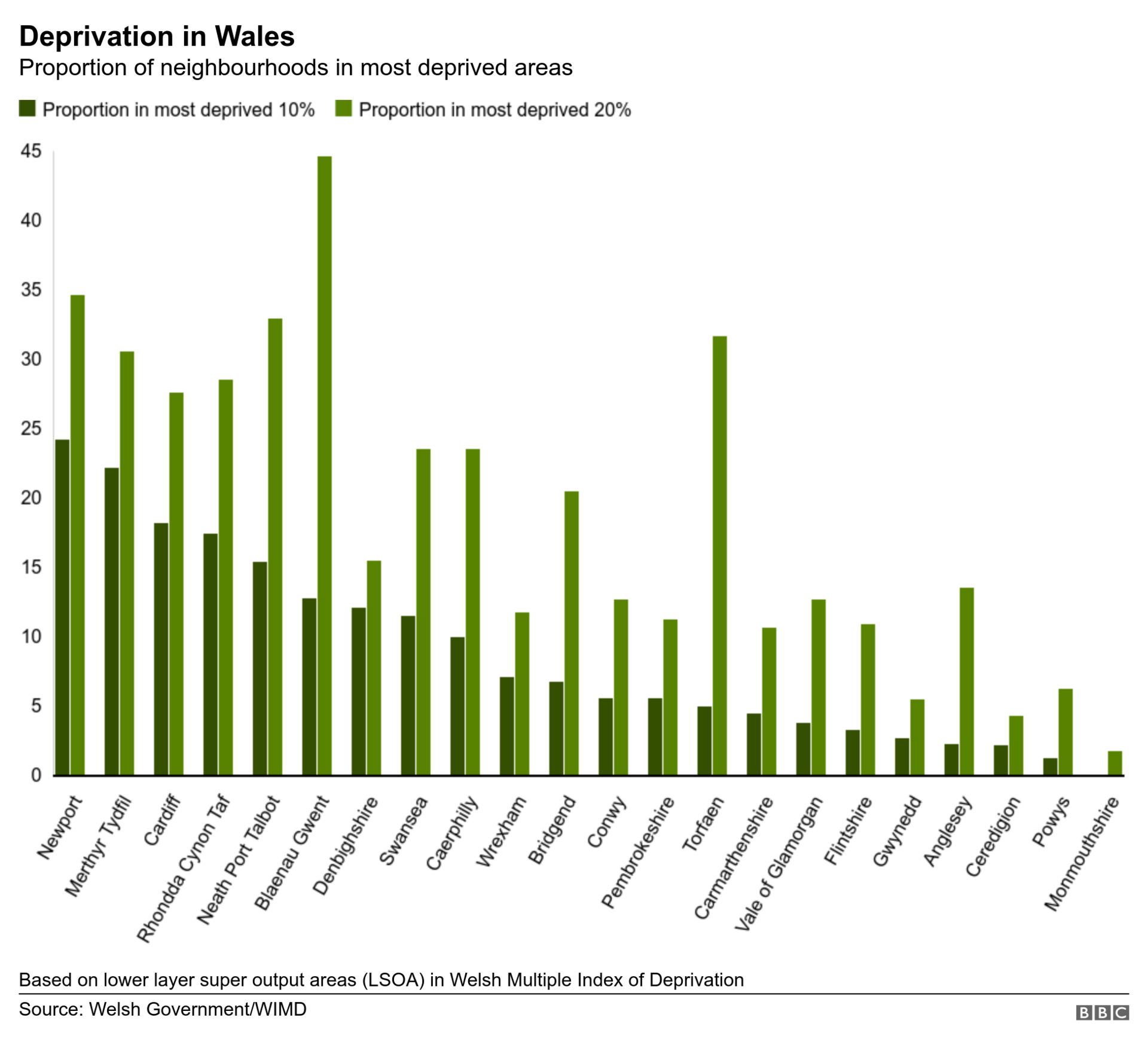
What about deprivation and ill-health?
Other risk factors affecting the spread of Covid-19 and the severity of its impact have been shown to include levels of poverty.
Though Ceredigion has pockets of deprivation, statistics show it to be among the most affluent parts of the country.
Figures from 2016 suggest the percentage of the population suffering from pre-existing conditions that can make them more vulnerable to the effects of the virus, external, such as asthma, COPD and diabetes, is slightly lower than much of the rest of Wales too.
A PHW study suggested 6.5% of Ceredigion's population had diabetes, compared with 8.6% in Blaenau Gwent, which high levels of deprivation.
How many deaths have there been in care homes?
Ceredigion has the lowest rate of care home deaths per care home place across Wales - it has only one recorded death.
In neighbouring Powys, more than half of its 91 deaths have been in care homes, according to Office for National Statistics figures.
Clusters of coronavirus in care homes has had a notable impact on the numbers of cases and deaths in other local authority areas such as Cardiff and Swansea.
Ceredigion council has been credited for putting its care homes into quarantine days before the official lockdown - meaning no visitors were allowed.
What else did the council do?
Its response to the outbreak has been making headlines for weeks.
It set up its own track and trace system in the early days of the pandemic - which PHW acknowledged played a part in suppressing new cases.
"Certainly, it would have contributed," Dr Shankar said.
"Ceredigion continued [its contact tracing efforts] throughout the pandemic - which included both confirmed cases and also symptomatic individuals who worked for the local authority, which is one of the region's biggest employers."
It would take the Welsh government until 1 June to roll out its own Test, Trace, Protect strategy.
Caravan and camping sites - all 800 of them - were also encouraged to close by the council ahead of the government's instructions.
And efforts to supply food and provisions to people who were shielding were kept within county, to avoid bringing the virus in from elsewhere.
Across Europe, many more remote, rural areas have fewer cases and that is why we think geography is part of the answer
The council's chief executive Eifion Evans told BBC Cymru Fyw recently it was far too early to be complacent and the situation could change overnight if infections were to take hold.
But Prof Woods agrees its actions have helped influence the spread of the disease so far.
"Across Europe, many more remote, rural areas have fewer cases and that is why we think geography is part of the answer.
"But the comparisons across Ceredigion and, say Gwynedd or Powys, where there is clearly a difference in numbers of cases - suggest some of the local policies have supplemented the impact."
However, Dr Shankar said he would not use the phrase success story for the region.
"I think all parts of Wales have done incredibly well in complying to the social distancing measures. So credit should be given to all for having such diligent compliance of those measures.
"But I think in Ceredigion there were additional factors that have played a part and which have been really good for the communities living there."
- Published28 May 2024

- Published16 April 2020
- Published16 June 2020

- Published23 June 2020
